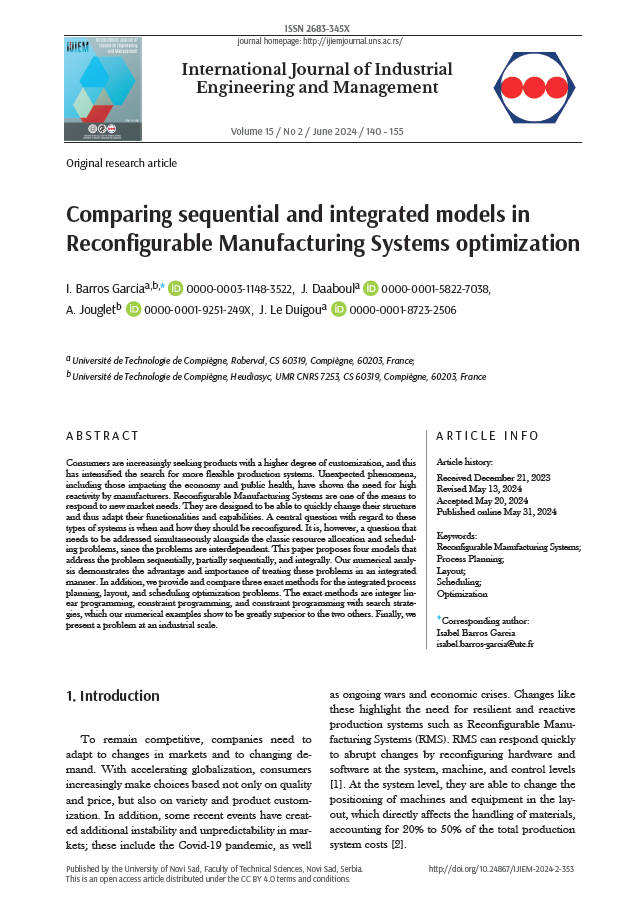Comparing sequential and integrated models in Reconfigurable Manufacturing Systems optimization

Published 2024-06-11
abstract views: 438 // FULL TEXT ARTICLE (PDF): 6
Keywords
- Reconfigurable Manufacturing Systems,
- Process Planning,
- Layout,
- Scheduling,
- Optimization
How to Cite
Copyright (c) 2024 International Journal of Industrial Engineering and Management

This work is licensed under a Creative Commons Attribution 4.0 International License.
Abstract
Consumers are increasingly seeking products with a higher degree of customization, and this has intensified the search for more flexible production systems. Unexpected phenomena, including those impacting the economy and public health, have shown the need for high reactivity by manufacturers. Reconfigurable Manufacturing Systems are one of the means to respond to new market needs. They are designed to be able to quickly change their structure and thus adapt their functionalities and capabilities. A central question with regard to these types of systems is when and how they should be reconfigured. It is, however, a question that needs to be addressed simultaneously alongside the classic resource allocation and scheduling problems, since the problems are interdependent. This paper proposes four models that address the problem sequentially, partially sequentially, and integrally. Our numerical analysis demonstrates the advantage and importance of treating these problems in an integrated manner. In addition, we provide and compare three exact methods for the integrated process planning, layout, and scheduling optimization problems.
Article history: Received (December 21, 2023); Revised (May 13, 2024); Accepted (May 20, 2024); Published online (May 31, 2024)


